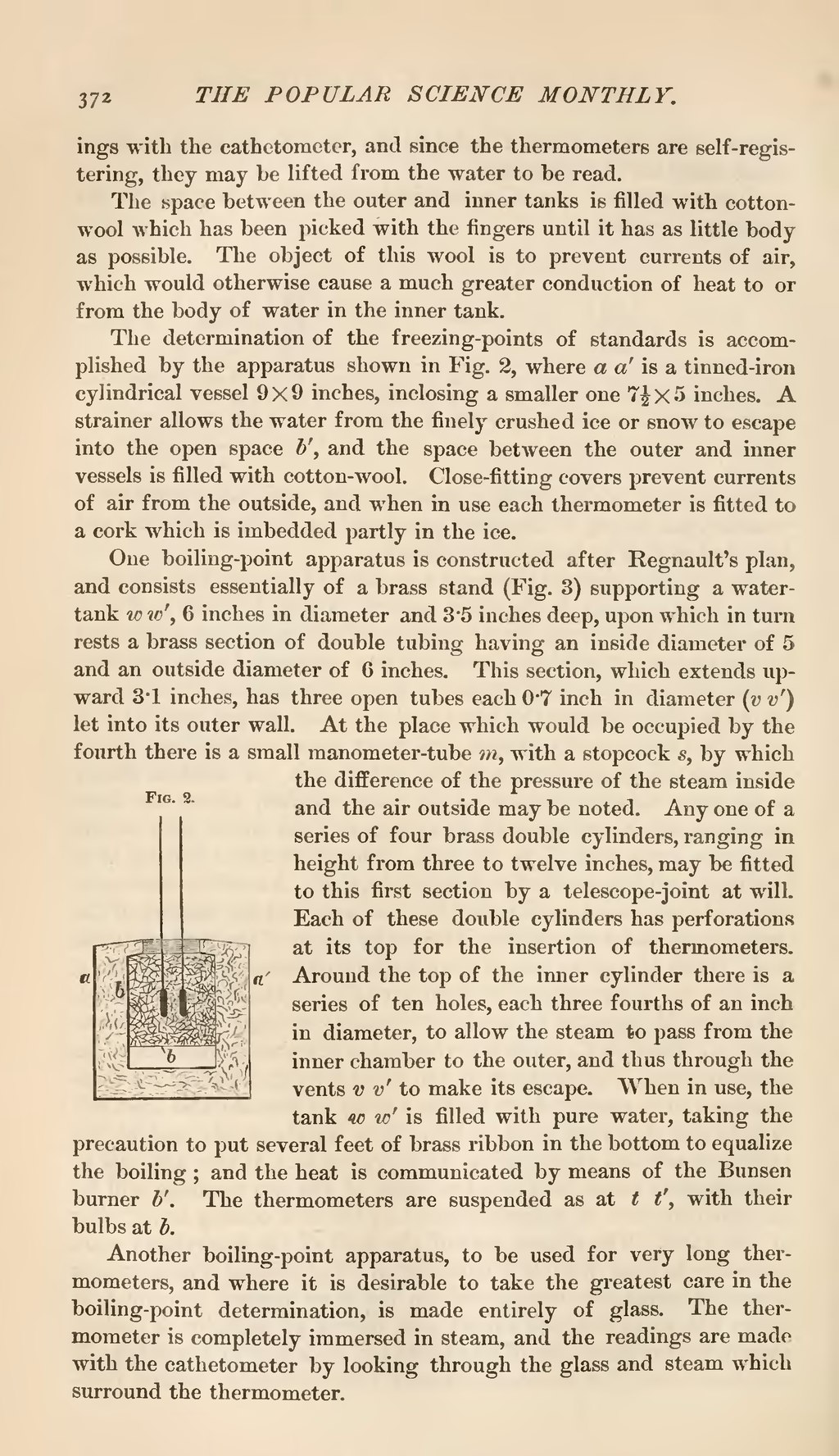ings with the cathetometer, and since the thermometers are self-registering, they may be lifted from the water to be read.
The space between the outer and inner tanks is filled with cotton-wool which has been picked with the fingers until it has as little body as possible. The object of this wool is to prevent currents of air, which would otherwise cause a much greater conduction of heat to or from the body of water in the inner tank.
The determination of the freezing-points of standards is accomplished by the apparatus shown in Fig. 2, where a a' is a tinned-iron cylindrical vessel 9 x 9 inches, inclosing a smaller one 7½ X 5 inches. A strainer allows the water from the finely crushed ice or snow to escape into the open space b', and the space between the outer and inner vessels is filled with cotton-wool. Close-fitting covers prevent currents of air from the outside, and when in use each thermometer is fitted to a cork which is imbedded partly in the ice.
One boiling-point apparatus is constructed after Regnault's plan, and consists essentially of a brass stand (Fig. 3) supporting a water-tank w w', 6 inches in diameter and 3∙5 inches deep, upon which in turn rests a brass section of double tubing having an inside diameter of 5 and an outside diameter of 6 inches. This section, which extends upward 3·1 inches, has three open tubes each 0∙7 inch in diameter (v v') let into its outer wall. At the place which would be occupied by the fourth there is a small manometer-tube m, with a stopcock s, by which  Fig. 2. the difference of the pressure of the steam inside and the air outside may be noted. Any one of a series of four brass double cylinders, ranging in height from three to twelve inches, may be fitted to this first section by a telescope-joint at will. Each of these double cylinders has perforations at its top for the insertion of thermometers. Around the top of the inner cylinder there is a series of ten holes, each three fourths of an inch in diameter, to allow the steam to pass from the inner chamber to the outer, and thus through the vents v v' to make its escape. When in use, the tank 10 w' is filled with pure water, taking the precaution to put several feet of brass ribbon in the bottom to equalize the boiling; and the heat is communicated by means of the Bunsen burner b'. The thermometers are suspended as at t t', with their bulbs at b.
Fig. 2. the difference of the pressure of the steam inside and the air outside may be noted. Any one of a series of four brass double cylinders, ranging in height from three to twelve inches, may be fitted to this first section by a telescope-joint at will. Each of these double cylinders has perforations at its top for the insertion of thermometers. Around the top of the inner cylinder there is a series of ten holes, each three fourths of an inch in diameter, to allow the steam to pass from the inner chamber to the outer, and thus through the vents v v' to make its escape. When in use, the tank 10 w' is filled with pure water, taking the precaution to put several feet of brass ribbon in the bottom to equalize the boiling; and the heat is communicated by means of the Bunsen burner b'. The thermometers are suspended as at t t', with their bulbs at b.
Another boiling-point apparatus, to be used for very long thermometers, and where it is desirable to take the greatest care in the boiling-point determination, is made entirely of glass. The thermometer is completely immersed in steam, and the readings are made with the cathetometer by looking through the glass and steam which surround the thermometer.

